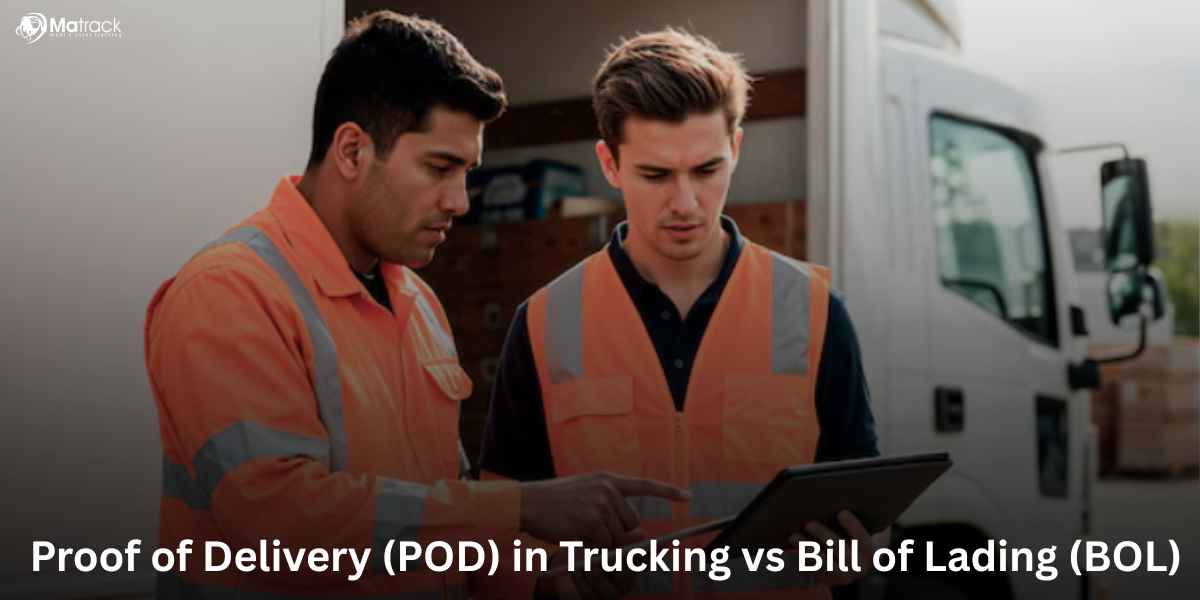Key Takeaways:
- Cargo theft occurs due to weak security in transit and storage, making high-value shipments easy targets.
- Preventing theft requires strong physical security, trained personnel, and real-time GPS tracking.
- Geofencing, theft alerts, and monitoring driver behavior help detect and stop suspicious activity.
- Matrack GPS Fleet Tracking provides real-time tracking and security alerts to prevent cargo theft effectively.
Understanding Cargo Theft: Why It Happens and Who’s at Risk?
Cargo theft occurs due to high-value shipments being left vulnerable during transport or storage. Criminals exploit weaknesses such as unattended vehicles, unprotected warehouses, and lack of security protocols. The most common theft targets include electronics, pharmaceuticals, food and beverages, and clothing.
Industries Most at Risk:
- Retail and E-commerce – High-demand consumer goods attract thieves.
- Logistics and Transportation – Trucks and cargo yards are prime targets.
- Pharmaceuticals – Medicines and medical supplies have high resale value.
- Food and Beverage – Easily resold, making them desirable to criminals.
Cargo theft typically happens at truck stops, rest areas, unsecured parking lots, and during handoff points in the supply chain.
10 Essential Steps to Prevent Cargo Theft
1. Implement Strong Physical Security Measures
Physical security is the first line of defense against cargo theft. Protecting cargo begins with securing trucks, warehouses, and loading docks.
- Use High-Security Locks – Invest in hardened steel padlocks and tamper-proof seals.
- Secure Parking Areas – Park in well-lit, monitored areas with fencing.
- Install Alarms and Surveillance Cameras – Use motion-detecting alarms and 24/7 video surveillance at warehouses and in cargo areas.
- Limit Access – Restrict warehouse and yard access to authorized personnel only.
2. Train Drivers and Employees on Security Best Practices
Human error is one of the biggest vulnerabilities in cargo security. Regular training ensures employees understand security protocols.
- Teach Drivers to Recognize Suspicious Activity – Encourage them to report unusual behavior or vehicles following them.
- Avoid Discussing Routes or Cargo Details Publicly – Criminals often gather information from casual conversations.
- Ensure Proper Locking and Securing of Trucks – Require drivers to inspect locks and seals before leaving rest stops.
- Use Check-in Procedures – Have drivers confirm identity before accessing cargo.
3. Plan Routes and Avoid High-Risk Areas
Proper route planning reduces exposure to cargo theft hotspots.
- Use GPS Tracking and Route Optimization – Real-time tracking helps monitor shipment locations.
- Avoid Parking in Isolated Areas – Sticking to secured truck stops and company-approved locations minimizes risks.
- Alternate Routes and Delivery Schedules – Avoid predictable schedules that criminals can exploit.
4. Use GPS and Telematics for Cargo Tracking
Technology plays a crucial role in theft prevention by enabling real-time cargo monitoring.
- Install GPS Trackers on Trucks and Cargo Containers – Allows immediate location tracking in case of theft.
- Geofencing Alerts – Alerts are triggered if a truck deviates from its planned route.
- Monitor Cargo Temperature and Security Sensors – Alerts on unauthorized access or environmental changes.
5. Establish Secure Freight Hand-Off Procedures
Cargo is most vulnerable during transfers between transport providers. Implement strict verification processes.
- Verify Driver and Shipment Details – Confirm identification, documentation, and authorization before releasing cargo.
- Use Electronic Proof of Delivery (ePOD) – Digital confirmation helps prevent fraudulent pickups.
- Limit Cargo Stops – Reduce unnecessary delays that increase exposure to theft.
6. Improve Warehouse and Distribution Center Security
Warehouses are prime targets for organized cargo theft rings. Strengthening security measures reduces risks.
- Install Perimeter Fencing and Controlled Access Points – Prevent unauthorized entry.
- Use RFID and Barcode Tracking – Ensures accountability for every shipment.
- Conduct Regular Security Audits – Identify weak points and enforce security policies.
7. Deploy Anti-Theft Technologies
Technology solutions significantly reduce theft risks and improve cargo security.
- Use Smart Locks and Tamper-Proof Seals – Prevent unauthorized access.
- Install Panic Buttons in Trucks – Allows drivers to alert authorities in emergencies.
- Adopt AI-Powered Video Surveillance – Intelligent monitoring detects suspicious activity.
8. Work with Trusted Transportation Partners
Vet and partner with reputable logistics providers with strong security records.
- Perform Background Checks on Employees and Contractors – Reduce insider threats.
- Ensure Security Compliance of Third-Party Carriers – Check security certifications and past performance.
- Use Secure Load Boards – Work with verified freight brokers to avoid fraudulent transactions.
9. Report and Share Theft Incidents
Rapid reporting and information sharing help prevent future cargo theft.
- Report Thefts Immediately to Authorities and Industry Networks – Quick responses improve recovery chances.
- Share Incident Data with Supply Chain Partners – Helps businesses stay informed on emerging threats.
- Collaborate with Law Enforcement and Cargo Security Organizations – Increases awareness and prevention strategies.
10. Obtain Cargo Theft Insurance
Even with the best precautions, cargo theft can still occur. Cargo insurance minimizes financial losses.
- Choose Comprehensive Theft Coverage – Ensure protection against theft, hijacking, and fraud.
- Review Policy Exclusions – Understand coverage limitations.
- Maintain Proper Documentation for Claims – Accurate records speed up claim processing.
How Matrack Fleet Tracker Helps You Prevent Cargo Theft

Matrack GPS Fleet Tracking prevents cargo theft by providing real-time location updates and alerts for unauthorized access. Immediate notifications on ignition starts or towing attempts help stop theft before it happens.
Geofence monitoring alerts fleet managers when a vehicle leaves a designated area. This prevents unauthorized stops and ensures quick action if a truck is taken off-route.
Detailed reports track unusual driver behavior and security risks. Identifying suspicious stops and deviations helps businesses prevent cargo theft effectively.
Conclusion
Cargo theft is a serious issue, but businesses can reduce the risk with the right security measures. Strong physical security, advanced technology, employee training, and industry collaboration help protect shipments and prevent financial losses.
Stopping cargo theft takes constant awareness and smart security strategies. Companies that take proactive steps will keep their supply chains safe, and Matrack GPS Fleet Tracking helps by providing real-time tracking and instant theft alerts.






